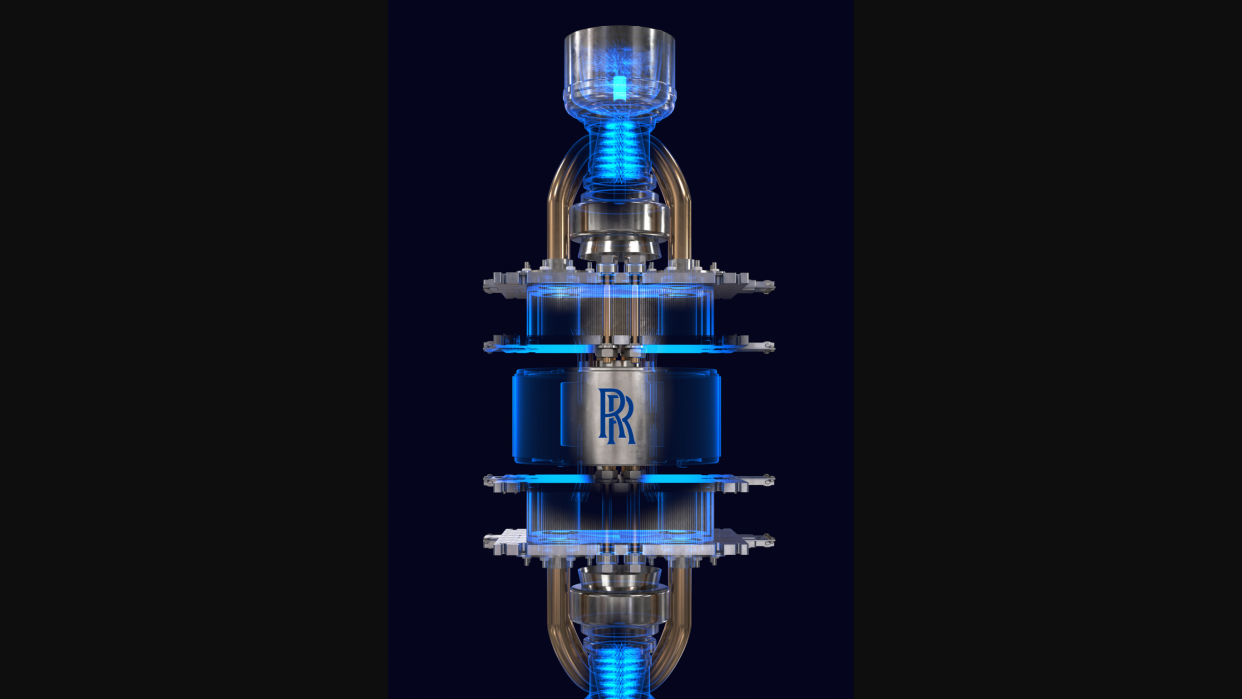Rolls-Royce unveils early-stage design for space nuclear reactor

A new image shows a possible version of future space propulsion.
Nuclear fission systems, which harness the energy released in the splitting of atoms, could be used to power astronaut bases on the moon or Mars. Or they could help shorten the travel time to the Red Planet, which takes six to nine months to reach with current-generation propulsion systems.
Rolls-Royce could be a part of that ambitious spaceflight future. The venerable company released an early-stage design of a micro-nuclear reactor on Friday (Jan. 27), in the wake of a 2021 agreement with the United Kingdom Space Agency to study future nuclear power options in space exploration.
"Each uranium particle is encapsulated in multiple protective layers that act as a containment system, allowing it to withstand extreme conditions," Rolls-Royce tweeted in a brief description of the system.
Related: NASA funds nuclear probes for icy moons, huge new space telescopes and other far-out tech ideas
Nuclear systems have long flown on robotic space missions. For example, radioisotope thermoelectric generators (RTGs) provide electricity for many probes, including NASA's Voyager 1 and Voyager 2 spacecraft, which are currently exploring interstellar space. Big NASA Mars rovers like Perseverance and Curiosity also use RTGs, though smaller rovers such as Spirit and Opportunity went with solar panels.
But RTGs are not fission reactors. Rather, they are nuclear batteries, converting to electricity the heat thrown off by the decay of radioactive material. Nuclear fission has yet to power a spacecraft off Earth, though that could change soon; for example, NASA and DARPA recently announced plans to build a nuclear thermal rocket by 2027.
Nuclear fusion — the power source of the sun and other stars, which flows from the merging of atoms — could also one day be part of humanity's spaceflight portfolio. That possible future is a long-term one, however; our species has yet to harness this power source here on Earth. (But U.S. scientists did announce a big breakthrough recently: a fusion experiment that produced more energy than it consumed.)
Speaking generally, some of the concerns of space fission or fusion power include safety for astronauts; portability, as more mass means a more expensive mission; and longevity in a harsh and rugged environment.
But nuclear power is a staple of space exploration nonetheless, both in reality and in science fiction. The technology even helped fuel a joke in the 2015 movie "The Martian." In the film, astronaut Mark Watney (played by Matt Damon) — in search of warmth in an unheated rover and desperately digging up a reactor buried in regolith for safety reasons — said his Red Planet training manual had a section about surface operations labeled "Don't Dig Up The Big Box of Plutonium, Mark."
Elizabeth Howell is the co-author of "Why Am I Taller?" (ECW Press, 2022; with Canadian astronaut Dave Williams), a book about space medicine. Follow her on Twitter @howellspace. Follow us on Twitter @Spacedotcom or Facebook.

